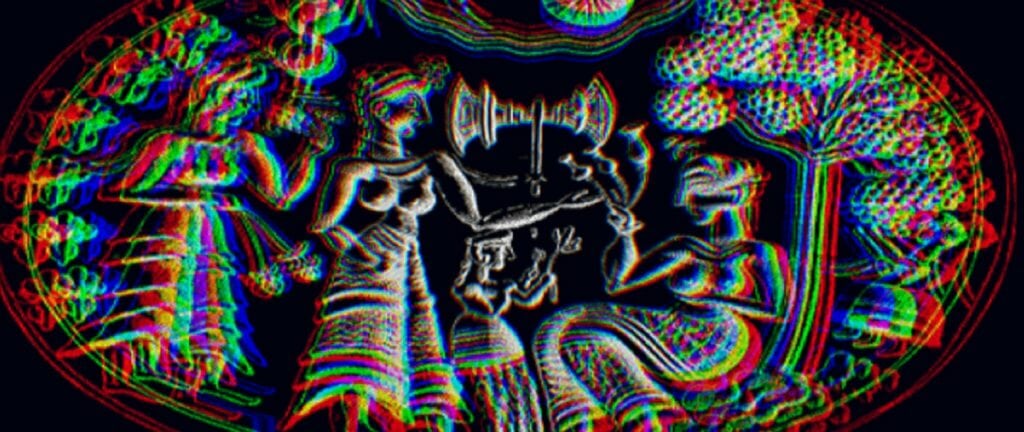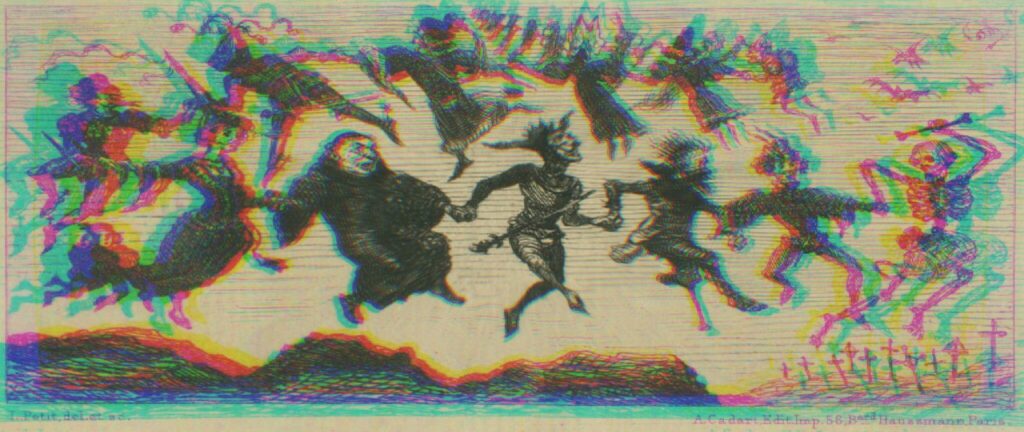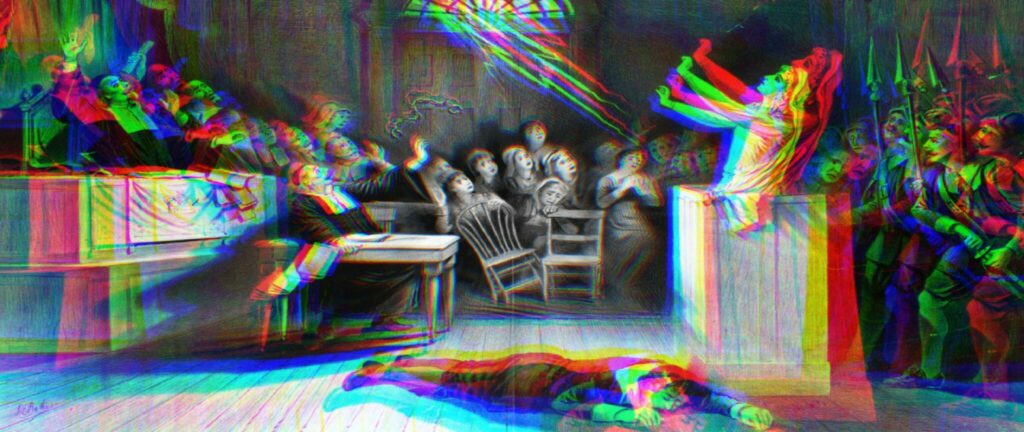Last week we celebrated bicycle day, which commemorates the first intentional LSD trip and discovered by Albert Hofmann in 1943. The LSD Hofmann tripped on came from a substance called ergot. But what is ergot? And how has it managed to sneakily shape history?
What is Ergot?
Ergot is a naturally occurring fungus that mainly grows on rye, but can be found on other grains too. Since humanity developed agriculture, it has come into contact with ergot, as grains quickly became our staple food source. Unlike LSD, which has basically no physiological side effects, ergot is quite the opposite. In fact it is toxic. Throughout history there were incidents where people experienced hallucinations, painful convulsions and trance-like states. They interpreted is as either religious or demonic possession. Which begs the question, how many historical events or religious revelations have been caused or influenced by folks tripping on… bread?
Here we will look at a few examples of events from history, that researchers now claim could have been influenced by ergot, the ‘horned grain’.
The Eleusinian Mysteries

The Eleusinian Mysteries were a secret religious rebirth ceremony that took place in Ancient Greece. So secret were the ceremonies (hence mysteries), that even today, little is known about what actually went on.
The ceremony honoured the goddesses Demeter and Persephone, focusing on the myth in which Hades, god of the underworld, kidnaps young Persephone. Her mother Demeter, goddess of agriculture and nature, pleads with Zeus for her daughter’s release. He grants it. But unfortunately, while in the underworld Persephone eats 6 pomegranate seeds. For this, she is cursed to spend 6 months of the year underground with Hades. During these months Demeter pines for her daughter, and being goddess of nature, blights the world with cold winter. When Persephone emerges from the underworld each year, the earth is reborn— plants grow and the land is bountiful.
In the secret ceremony, participants drank ‘kykeon’. A drink which, in honour of the agriculture goddess, contained barley. Many scholars believe that ergot infected this barley, as accounts of the ceremony imply kykeon had a psychotropic effect. This is a rare example of ergot’s effect used intentionally. Plato, who himself participated, stated
“our mysteries had a very real meaning: he that has been purified and initiated shall dwell with the gods.”
Whatever actually went on, it is clear that it had a profound effect on those who took part.
Dance Mania

A recurring phenomenon throughout history is the so-called ‘dance mania’. The phenomenon included uncontrollable dancing, and can range from a solo dancer to whole communities and villages— boogying until they collapsed from exhaustion, or in extreme cases, died. This was most common between the 14th and 17th centuries in mainland Europe, where people danced as though in a trance, often screaming and twitching. Ergot poisoning is a possible reason for these outbreaks. Also known as St Anthony’s Fire, as well as hallucinations it causes fierce convulsions in sufferers, mimicking the movement of dance.
Joan of Arc

Many know the story of Joan of Arc, the French peasant girl born in 1412, who, on hearing the voices of saints, led the French army to defeat the English. But, something that is not often questioned is the voices themselves. Where did they come from? Was it really the voices of saints Michael, Margaret and Catherine telling teenage Joan to save France? Today, there are many theories of what really caused the voices, including schizophrenia, tinnitus, ingestion of belladonna and, of course, ergot.
France especially, was a hotbed for ergot growth, due to its warm climate, often suffering from deadly outbreaks of the disease in its rural communities. It is crazy to imagine that an army may have been led to battle and on to victory, on the word of a girl who was just tripping on bad dough! Despite being a huge factor in France’s triumph, Joan was soon after burnt at the stake for being a heretic and witch. Which brings us to…
The Salem Witch Trials

Witch trials had long been prevalent across Europe, growing significantly in the 15th Century until the end of the 18th. In this time, an estimated 40,000 people, mainly women, were murdered on charges of witchcraft. Again, ergot is in the frame as one of the culprits for triggering this tragic chain of events. However, the infamous Salem Witch Trials that took place in Massachusetts between 1692 and 1693, is where the influence of ergot has been the most studied.
In 1692, two young girls suffered from violent fits, hallucinations and prickly skin from invisible needles. Today, we recognize these complaints as the symptoms of ergot poisoning, but at the time it caused accusations of witchcraft in the small community. As more and more townspeople began to hallucinate, more and more accusations flew, eventually resulting in 19 people being hanged.
Maybe it was a case of mass hysteria, or perhaps religious mania, but one thing is for sure, it was more likely the fault of ergot than, as was said at the time ‘…Satan being loosed in Salem.’





